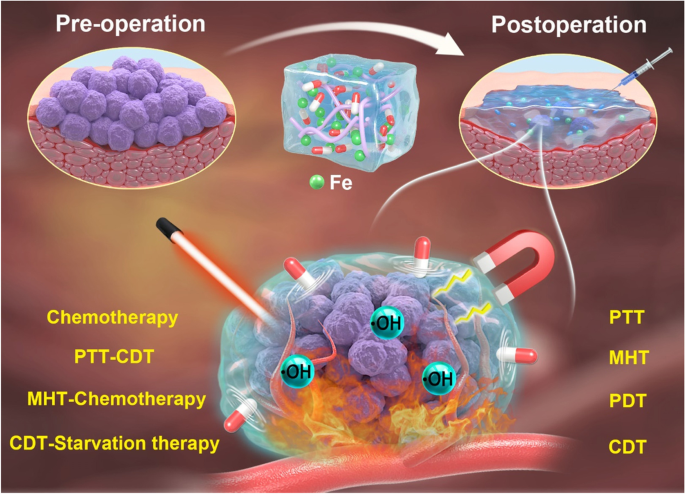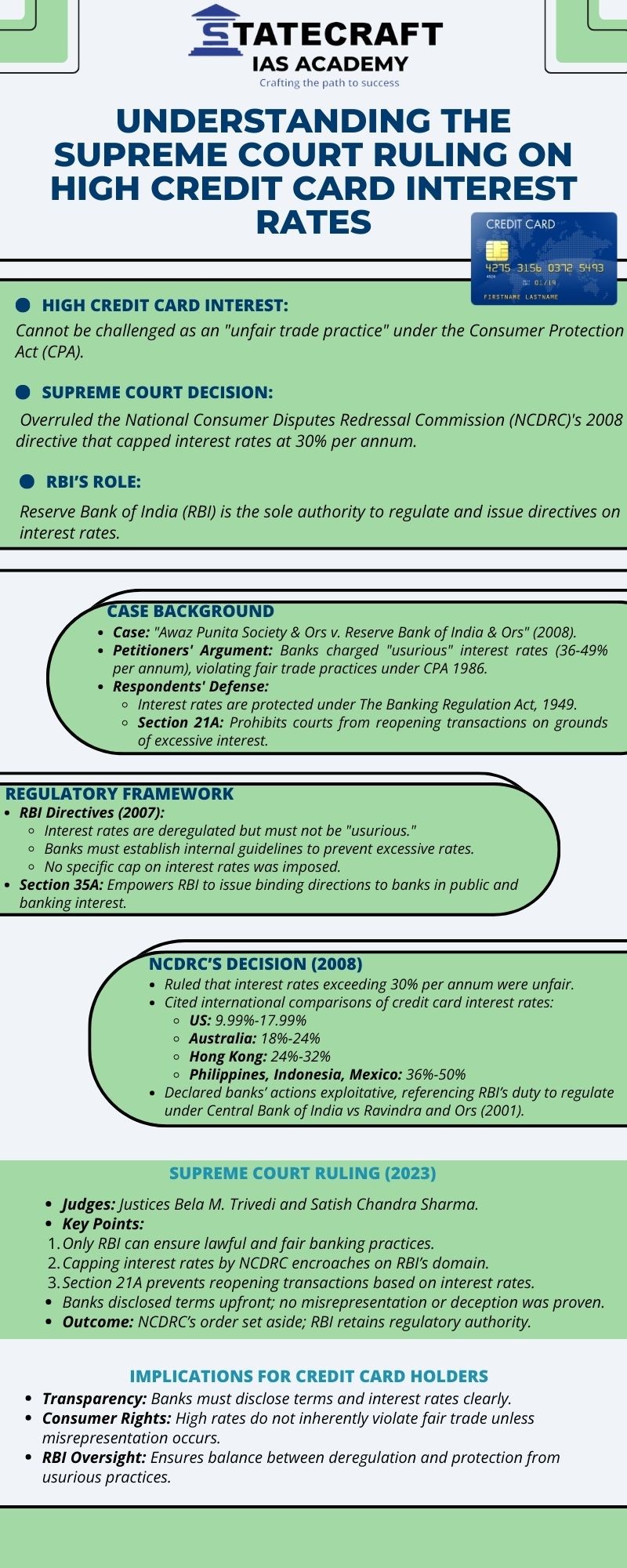Index:
- Climate Change, Poverty, and Human Trafficking in West Bengal
- Experts on GM Crop Panels to Declare Conflict of Interest
- Injectable Hydrogel for Targeted Cancer Treatment
- Purchasing Managers Index
- How In Flight Internet Works
- Understanding the Supreme Court Ruling on High Credit Card Interest Rates - Infographic
1. Climate Change, Poverty, and Human Trafficking in West Bengal
CONTEXT: Human trafficking remains a significant challenge in West Bengal, despite efforts by the government and NGOs.
Climate change, particularly the impacts of tropical cyclones, has exacerbated poverty in vulnerable regions, such as the Sundarbans, leading to increased human trafficking.
- Role of Climate Change in Human Trafficking
- Cyclonic Activity: Since May 2020, five tropical cyclones have impacted West Bengal’s coastline, including Cyclones Amphan and Yaas.
- Destruction of Livelihoods: These disasters have devastated local economies, particularly in the Sundarbans, forcing people to migrate.
- Increased Vulnerability: Women, children, and impoverished communities are particularly at risk, as climate-induced poverty makes them more susceptible to traffickers who exploit their circumstances.
- Exploitation of Socio-Environmental Vulnerabilities
- Trafficker Tactics: Traffickers take advantage of the socio-environmental vulnerabilities in post-disaster situations and the lack of access to essential services.
- Migration Patterns: The destruction caused by cyclones leads to increased migration from rural to urban areas, especially in the Sundarbans. Migrants, especially women and children, face higher risks of trafficking due to their vulnerability during migration.
- Human Trafficking Data
- National Crime Records Bureau (NCRB) Report (2022):
- 58,871 people reported missing (53,655 women and 12,455 children).
- 67 human trafficking cases reported with 78 victims.
- Conviction rate for trafficking cases: 55%.
- ILFAT Data:
- In 2020, 59 trafficking cases reported; this increased to 67 in 2022.
- In 2022, 60 girls and 18 boys below 18 years were trafficked.
- Case Study: Neha’s Story
- Impact of Cyclone Amphan (2020): Neha, a trafficking survivor from the Sundarbans, recounts how the cyclone destroyed her village and pushed her into poverty.
- Exploitation: Neha was lured with promises of employment but was sold to traffickers. She was rescued and now works with ILFAT to spread awareness on trafficking in the Sundarbans.
- Initiatives and Stakeholder Actions
- ILFAT (Integrated Leaders Forum Against Trafficking):
- One of the largest federations of trafficking survivors, with over 2,800 members.
- Released a report on World Anti-Human Trafficking Day (July 30, 2024), highlighting the growing number of trafficking cases in the state.
- Advocates for integrating climate change as a key factor in anti-trafficking strategies.
- Gorambose Gram Bikash Kendra (NGO):
- Focuses on creating opportunities and providing essential support systems for vulnerable communities in the Sundarbans.
- Policy Recommendations
- Integration of Climate Change into Anti-Trafficking Measures: Policymakers and NGOs should incorporate climate change as a critical factor in interventions against human trafficking.
- Strengthening Social Support Systems: Increased access to healthcare, education, and economic opportunities in disaster-prone areas can help mitigate the risk of trafficking.
Public Awareness Campaigns: NGOs like ILFAT and survivor-led organizations should continue to educate communities about the risks of trafficking, especially during post-disaster recovery periods.
2. Experts on GM Crop Panels to Declare Conflict of Interest
- Overview of New Rules
- The Union Ministry of Environment, Forest and Climate Change has amended the rules for selecting experts to the Genetic Engineering Appraisal Committee (GEAC).
- These amendments require experts to disclose any conflict of interest that could affect their duties.
- Experts must ensure that any conflict does not impact their decisions in GEAC meetings.
- Disclosure Requirements for Experts
- Obligation to Disclose: Experts must disclose any direct or indirect association with the matter being discussed before GEAC meetings.
- Recusal Requirement: If an expert has a conflict, they must recuse themselves from the meeting unless specifically requested by the committee.
- Professional Affiliations: All selected experts must submit a form detailing their professional affiliations for the last 10 years before joining the committee.
- Context Behind the Amendments
- These changes were prompted by a Supreme Court order in July 2023, which called for the formation of a national policy on GM crops.
- The court had delivered a split verdict on the Centre’s 2022 decision to grant conditional approval for the environmental release of GM mustard, leaving the final decision to a future bench.
- One of the key directives was establishing a process to resolve conflicts of interest.
- Conflict of Interest Allegations
- The issue of conflict of interest was raised in 2013 when the Coalition for GM-Free India alleged that a member of a Technical Expert Committee was linked to an organization funded by Monsanto (now part of Bayer CropScience).
- Monsanto was a major player in biotechnology and agricultural chemicals, and concerns were raised about its influence on regulatory decisions.
- Implications of the Amendments
- The new rules aim to increase transparency in the selection and functioning of experts in GEAC.
- The move is intended to restore public confidence in the regulatory process for GM crops and ensure that decisions are made impartially
GEAC (Genetic Engineering Appraisal Committee)
The Genetic Engineering Appraisal Committee (GEAC) is the apex body in India responsible for regulating genetically modified (GM) organisms, particularly in agriculture. It evaluates and grants approvals for the environmental release and commercial cultivation of GM crops. The GEAC is composed of experts from various fields, including agriculture, biotechnology, environment, and public health.
Its primary functions include:
- Regulation and Approval: GEAC evaluates applications for the commercial release of GM crops and ensures they meet safety and environmental standards.
- Public Safety: The committee ensures that GM crops do not pose risks to human health, biodiversity, or the environment.
- Monitoring: It monitors the cultivation and environmental impact of GM crops after their release.
- Advisory Role: It advises the government on policies related to biotechnology and GM crops.
The committee’s decisions are crucial in shaping India’s approach to biotechnology and the regulation of GM organisms in agriculture.
3. Injectable Hydrogel for Targeted Cancer Treatment
CONTEXT: Researchers from the In-dian Institute of Technolo- gy-Guwahati (IIT-G) and the Bose Institute, Kolkata have developed an advanced injectable hydrogel for localised cancer treatment.
- Current Cancer Treatments and Their Limitations
- Chemotherapy: Often has severe side effects due to the systemic delivery of drugs, affecting both cancerous and healthy cells.
- Surgical interventions: Can be invasive and not always effective in localized treatment.
- The new injectable hydrogel overcomes these limitations by providing targeted drug delivery directly to the tumor site.
- How the Hydrogel Works
- Controlled Drug Release: The hydrogel delivers drugs precisely to the tumor, ensuring localized action.
- Composition: Made of ultra-short peptides, the hydrogel is insoluble in biological fluids, ensuring it stays at the injection site.
- Response to Glutathione (GSH): The hydrogel is designed to respond to elevated glutathione (GSH) levels, which are abundant in tumor cells.
- Reduced Side Effects: The targeted delivery of drugs significantly reduces systemic side effects, making it safer and more effective.
- Significance and Future Applications
- The hydrogel’s design mimics living tissues, making it highly suitable for biomedical applications.
It offers precision and harmony with the biological environment, addressing critical needs in cancer treatment.
What Are Hydrogels?
- Definition of Hydrogels
- Hydrogels are water-based polymer networks that are capable of absorbing and retaining large amounts of water or biological fluids.
- Due to their high water content, they are soft, flexible, and can mimic living tissues, making them ideal for biomedical applications.
- Properties of Hydrogels
- Biocompatibility: Hydrogels are generally compatible with biological systems, making them safe for medical use.
- Responsive to Stimuli: Some hydrogels can respond to environmental changes like temperature, pH, or the presence of specific molecules (e.g., glutathione in the case of cancer treatment).
- High Water Content: Their ability to retain water allows them to maintain a gel-like structure, which is important for drug delivery and wound healing.
- Applications of Hydrogels in Medicine
- Drug Delivery Systems: Hydrogels can act as drug carriers, releasing drugs in a controlled manner over time.
- Wound Healing: Hydrogels can be used in dressings to promote healing by maintaining moisture in the wound.
- Tissue Engineering: Hydrogels are used in scaffolds for tissue regeneration, providing a structure that supports the growth of new cells.
- Cancer Treatment: As shown in the recent research, hydrogels can deliver drugs directly to cancerous tissues, minimizing side effects.
- Types of Hydrogels
- Natural Hydrogels: Derived from natural sources like collagen, alginate, or hyaluronic acid.
- Synthetic Hydrogels: Man-made, offering controlled properties for specific medical applications.
- Smart Hydrogels: These hydrogels can respond to external stimuli, such as changes in pH, temperature, or the presence of specific biomolecules like glutathione in tumors.
4. Purchasing Managers Index
CONTEXT: Hopes of a recovery in the manufacturing sector took a fresh hit as factory activity levels in India’s private sector stumbled to a 12-month low in December from an already weak November performance, with new orders and output levels slipping to the lowest through 2024, as per a private survey-based index.
- Manufacturing activity expansion, which had slipped a joint-11-month low in November, plummeted further as per the seasonally adjusted HSBC India Manufacturing Purchasing Managers’ Index (PMI), which dropped from 56.5 in November to 56.4 in December. A reading of over 50 indicates a rise in activity levels.
- Input costs continued to firm up, with firms reporting an uptick in container, material and labour costs in December, but the overall rate of input price inflation was moderate and eased from November.
Purchasing Managers Index?
- It is a survey-based measure that asks the respondents about changes in their perception about key business variables as compared with the previous month.
- The purpose of the PMI is to provide information about current and future business conditions to company decision makers, analysts, and investors.
- It is calculated separately for the manufacturing and services sectors and then a composite index is also constructed.
- The PMI is a number from 0 to 100.
- A print above 50 means expansion, while a score below that denotes contraction.
- A reading at 50 indicates no change.
If PMI of the previous month is higher than the PMI of the current month, it represents that the economy is contracting.






